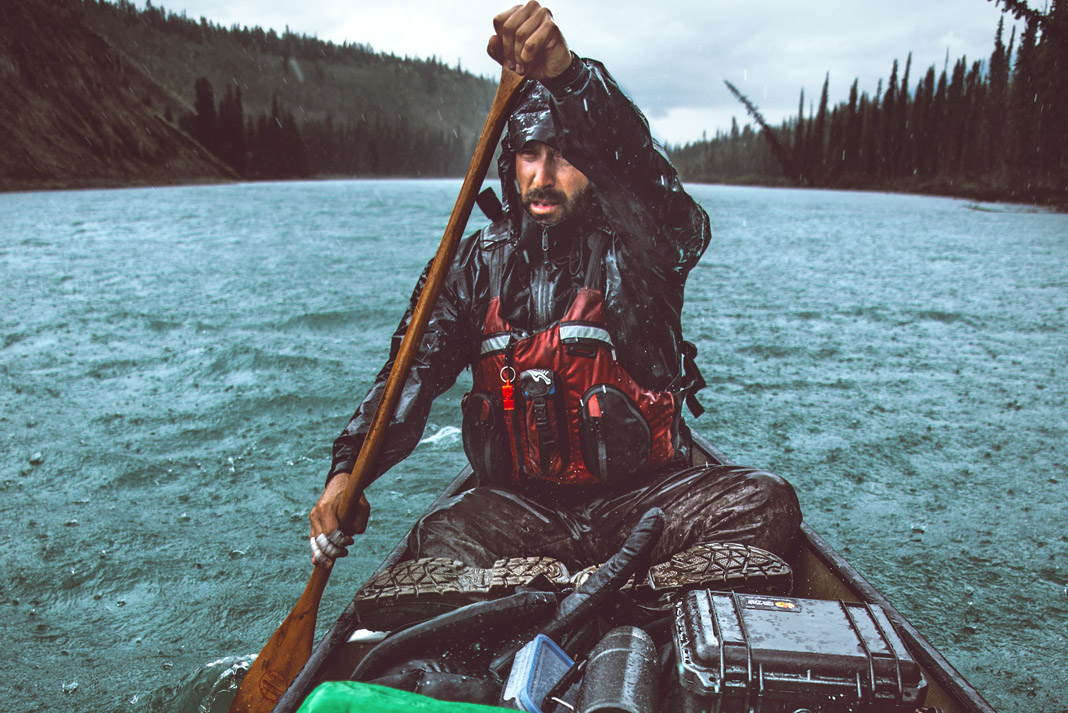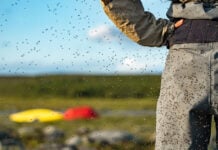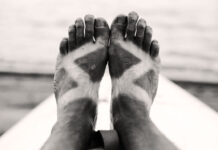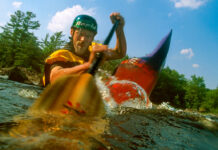It’s not easy deciding on the cover photo for the Trip Guide special issue of Paddling Magazine. What’s the one photograph that will inspire the greatest number of people to buy this magazine and ultimately book one of the 107 adventures listed inside? So much pressure.
EHL Education Group is a hospitality school with campuses in Switzerland and Asia. They have a corporate training and consultancy side hustle offering a range of business solutions, including research projects. Dr. Meng-Mei Maggie Chen is the Assistant Professor of Marketing and she recently conducted a study and produced the paper, Destination Marketing: How to Use Images to Promote a Destination.
Just what we needed, I thought. Dr. Chen’s scientific research would end the debate and help us choose the most inspirational and commercially successful image for the front of this magazine.
In the first stage of her study, Dr. Chen conducted qualitative research to identify photos associated with Switzerland. In stage two, respondents in four different countries were presented with the 65 photos and asked if they had positive or negative attitudes toward the images.
Based on these responses, Dr. Chen and her team developed the Imagery Diagnosis Model.
Take out a blank piece of paper and divide it into four quadrants with a pencil. The top right is what Dr. Chen calls the Treasures, which are images strongly identified with Switzerland that inspired positive feelings in respondents. Think the cozy village of Zermatt at the foot of the majestic Matterhorn.
The bottom right quadrant is the Hidden Gems, including photos weakly identified with Switzerland but with positive associations. Picture a handsome couple sharing a bottle of wine by the outdoor pool of some mountain spa.
Top left quadrant is Roadblocks. These images are strongly associated with Switzerland but kinda meh. These are the tired and cliché images, like Swiss chocolates, cheese trays and St. Bernards with brandy barrels around their necks.
And the bottom left quadrant, Dr. Chen says, are the least effective and should be avoided. These images were weakly associated with Switzerland and inspired negative feelings. I’ll come back to quadrant four.
I’m sure you can see where I’m going with this.
I thought we could use the Imagery Diagnosis Model to determine which of the potential photo options would scientifically produce the best magazine cover. Which photographs would be our Treasures?
According to Dr. Chen’s research, the high-adventure images of alpine skiing, ice climbing and mountaineering fell into least desirable quadrant four—the Traps. Oh wait, I forgot to mention, Dr. Chen and her team collected the data from an online survey sent to users of BBC Travel and Lonely Planet websites and followers of the Visit Switzerland Instagram account. Not exactly a niche outdoor adventure enthusiast audience, like the readers of Paddling Magazine.
The Goldilocks Effect marketing phenomenon comes from the Brothers Grimm story of the Three Bears. You remember. Goldilocks is confronted with the choice between three bowls of breakfast porridge. The Goldilocks Effect principle is utilized by marketers selling just about everything.
When buying cloud software, like say Adobe Photoshop, you’re often presented with the choice of bronze, silver or gold packages.
We sell one-year, two-year and three-year subscriptions to Paddling Magazine.
Bike shops bring in a few $10,000 mountain bikes along with the $1,000 bikes because it helps sell more $5,000 bikes.
This marketing technique is incredibly effective. The vast majority of travelers are like Goldilocks. They will go for the silvery middle option that is “just right.” The Goldilocks Effect plays on the natural psychological impulse to avoid extremes.
This photograph of canoeist Martin Trahan on a 2,000-mile Yukon River expedition is a Paddling Magazine fan favorite. We’ve posted it on Instagram several times since it originally appeared in the 2018 Summer issue. Each time it has received a record number of likes and more shares than almost any other post. But why?

Paddling Magazine readers are not the majority of travelers. Even the most pampered paddling adventures are far from the chalet-to-chalet air-conditioned coach tours popular in the Swiss Alps.
If you needed the perfect porridge, best fit rocking chair or a bed that’s neither too soft or too hard, you wouldn’t be reading this editorial. You wouldn’t be planning your next canoe, kayak or paddleboard trip in the first place. You already know it could be too damn hot or finger-numbingly cold. In our minds, photos of adverse conditions are strongly associated with paddling trips. Sure, sometimes it sucks at the time, but we tend to look back on those experiences positively.
Wood smoke stinging our eyes after a day of mosquitos, headwinds, waves or boggy portages isn’t too extreme. It’s what makes paddling trips different and awesome, Goldilocks.
It’s just right.
This article was first published in Paddling Magazine Issue 64. Subscribe to Paddling Magazine’s print and digital editions here, or download the Paddling Magazine app and browse the digital archives here.
Scott MacGregor is the founder and publisher of Paddling Magazine.
Your most favorite photo of all time. You already know why. | Photo: Jay Kolsch









Nailed it!